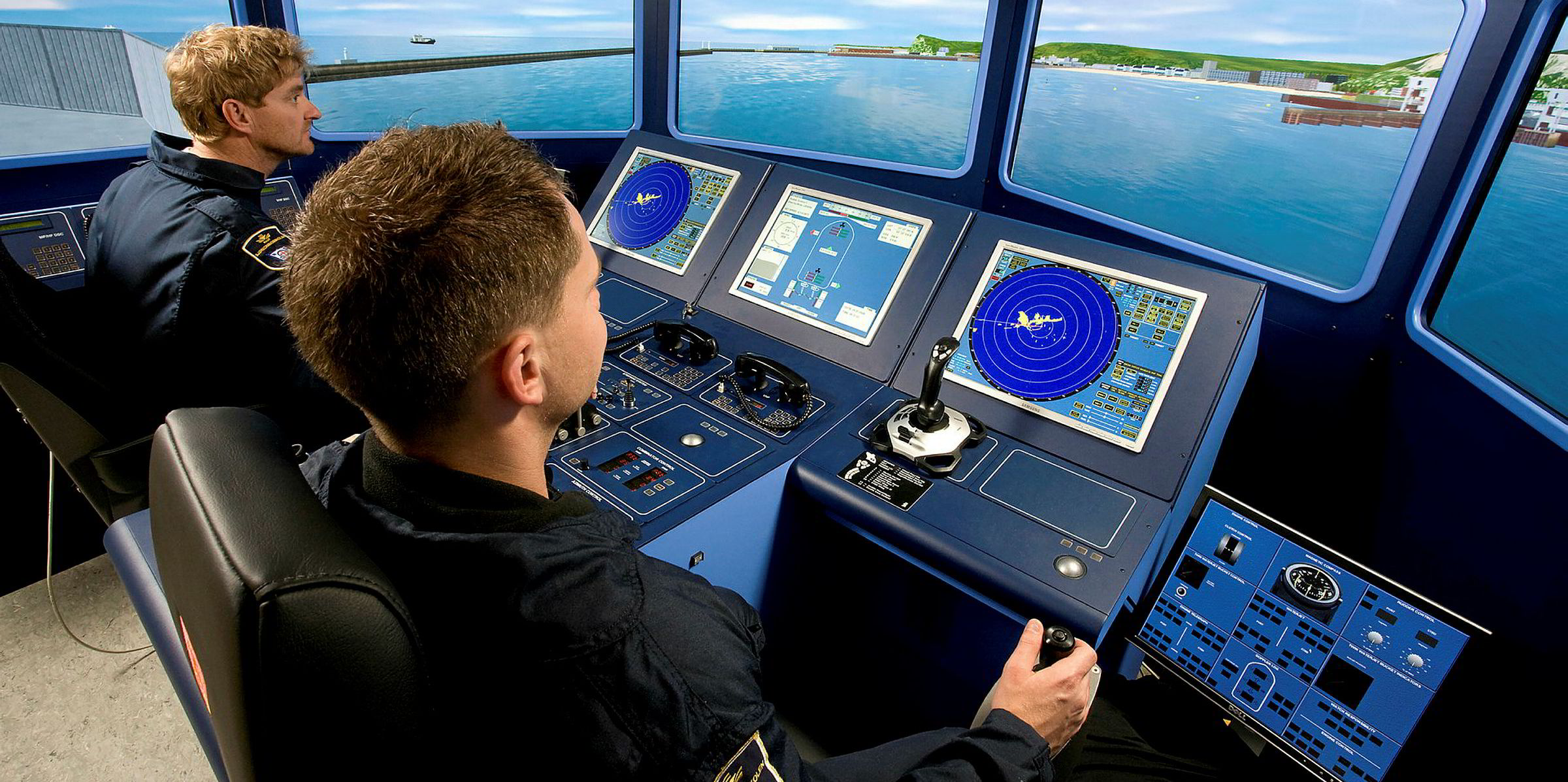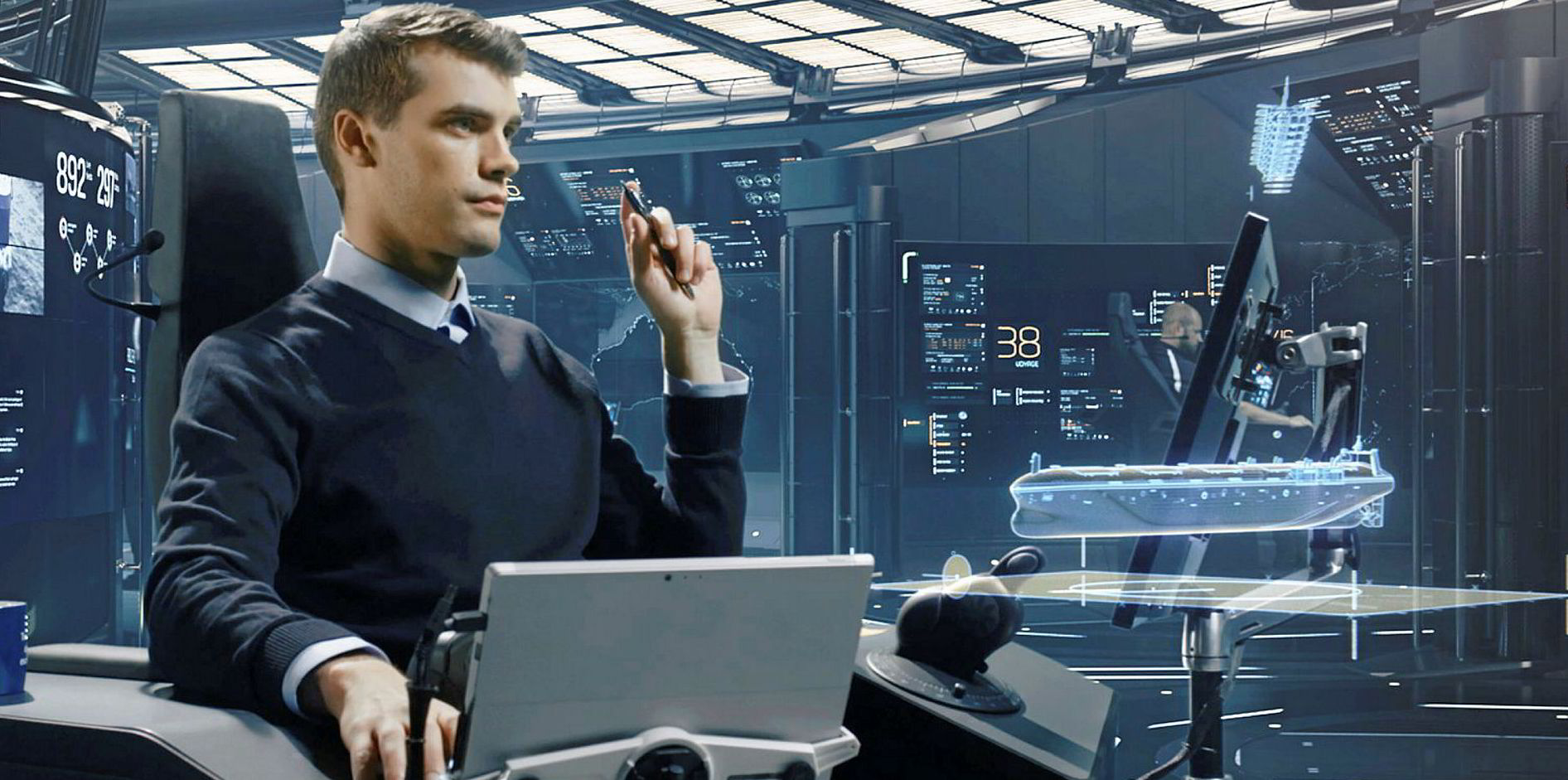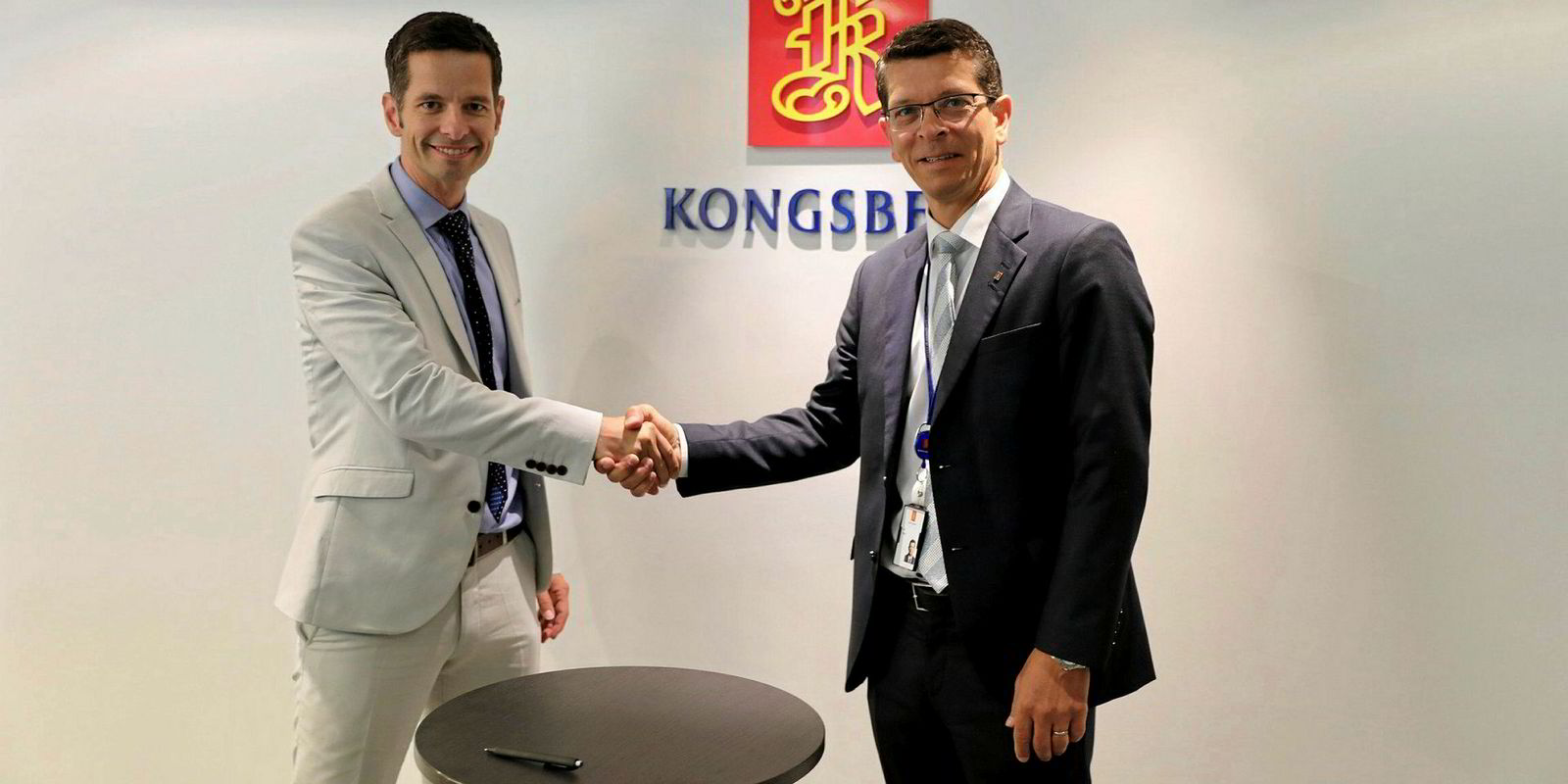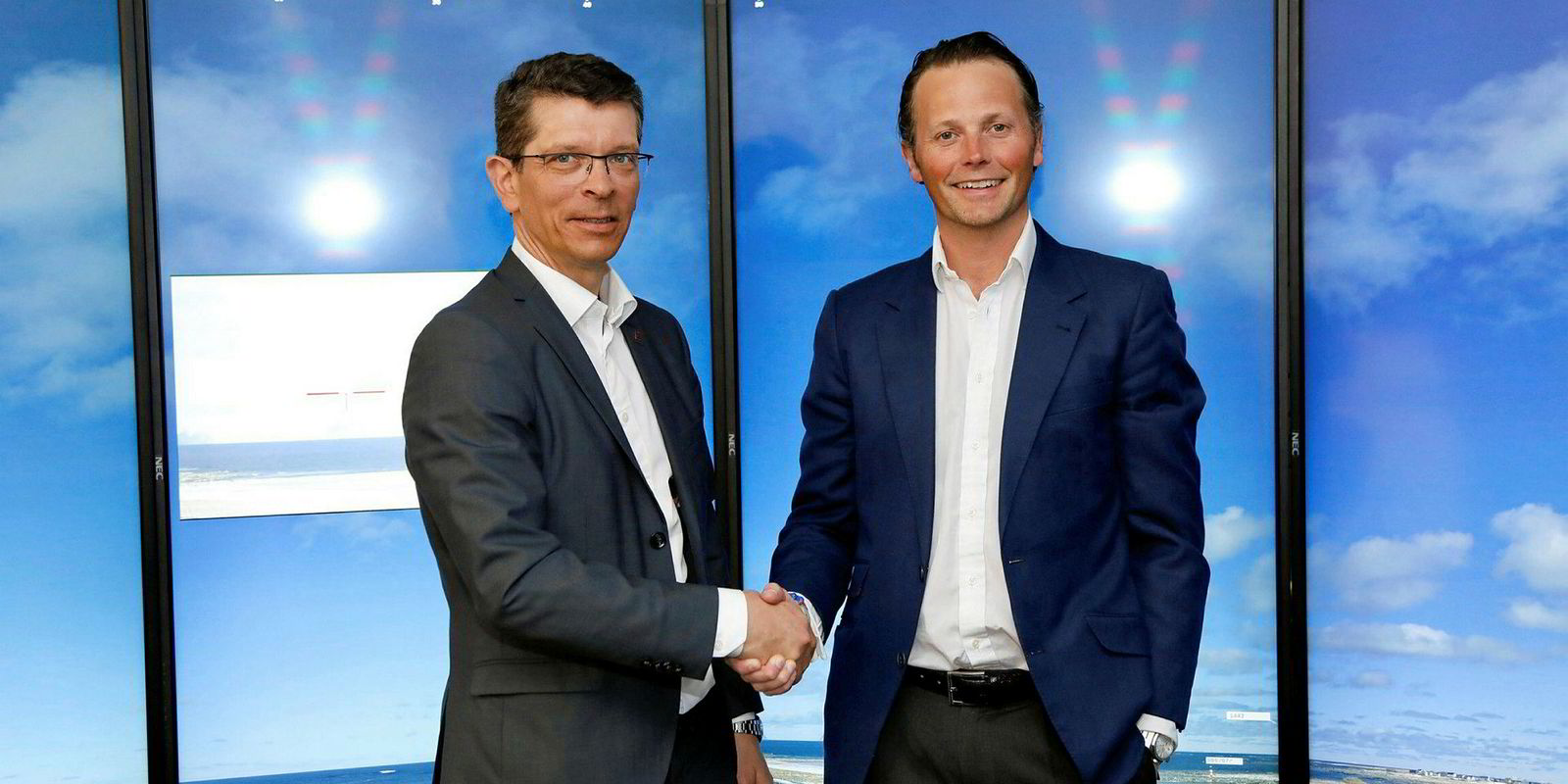When Norwegian tech group Kongsberg agreed to buy Rolls-Royce Commercial Marine last summer, it was adamant the merger did not rely on a market recovery but was an opportunity to become the industry leader.
Now that the £500m ($655m) takeover has completed, chief executive Geir Haoy says Kongsberg has a lot of work to do to ensure the merger is as smooth as possible, but is confident it can quickly integrate the two companies to achieve its aim.
Until completion on Monday, Kongsberg had not been able to see any of Rolls-Royce Commercial Marine’s internal figures since doing due diligence last July, so Haoy was unable to be specific about some details of the takeover at the time of an interview with TradeWinds.
“Ultimately our customers have to trust [that the merged] Kongsberg Maritime is able to support them from day one,” he said.
Long list of issues
“All the systems have to work. Everyone needs to know where to report. We have been working on this for nine months and a lot has been done. We are getting more comfortable every day, but the list is long and still there are some issues that we need to clarify.”
Haoy pointed to a list of 6,000 items Kongsberg needs to tick off, with 3,600 people changing employer and 240 IT systems that have to be integrated or switched over.
He does not believe Kongsberg paid a cheap price, as was alleged by some at the time of the sale.

“I think we paid a market price. There were others [potential buyers] in there. Whether the price is cheap or expensive depends on what we do with the merger. There is no doubt the market has been challenging for everybody, particularly in the offshore oil and gas sectors. And still there is very low activity in certain areas, in particular the newbuild, and also aftermarkets.
“When we looked at this business case, we did not count in that the market will recover to be able to turn this around. We believe that merging these two companies, we should be able to turn it around and create a stronger maritime supplier without seeing any particular recovery of the offshore market in the next two years at least.”
The aim is “to increase our scope so that we become a more complete supplier”.
Haoy said Rolls-Royce Commercial Marine’s core is at the other end of a linked value chain, in which it is stronger in the propulsion and mechanical sides, but moving into control and systems. Kongsberg comes more from the control and system side and is moving into the marine operations and machine parts of the business.
“So, we are coming from two different directions and over the years seeing the value of increasing our scopes. Our footprint and scale is basically doubling, and giving a better value proposition for the common clients that we have,” he said. The merged outfit will have equipment installed on more than 30,000 vessels.
Haoy revealed that the two companies have been talking on and off for about a decade over possible cooperation or a takeover by one or the other, leading to serious negotiations in August 2017.

“We have competed and also cooperated in the past,” he said, adding that “over the lifetime of the assets, our customers are not the yards with which we often sign the contract, but the end user, the owner or the operator. So to be able to support them is crucial to be a successful supplier”.
More autonomy
Despite the current focus on digitalisation, it was not a main driver of the merger. However, it became clear both groups believe the maritime business is going in a similar direction, “leading to more autonomy — not unmanned, but more digital application”.
But Haoy stressed that the main reasons are scale and combined capability, adding that he does not see much redundancy.
“There will be some overlap, but our focus is to consider the capacity and capability that we have in the market ahead of us and the backlog. I am quite sure we will need most of the engineers from both sides. They have their competence, and we have ours, and we will need that going forward, although we will need to adjust that depending on how the market is going,” he said.
Integration is expected to take two years and cost NOK 450m ($52.5m) and there will be legal issues to sort out, such as leases on sites, but Haoy hopes to reveal the basic structure of the new group within a month or so.
He admits there may still be gaps that the merged group needs to develop, particularly new concepts on the fuel and power side of propulsion and sustainable technologies, connecting the bridge controls all the way through vessels to the propellers. It could involve organic growth or further acquisitions, but that will not be clear until the merger is well progressed.
For now, he added: “It is important to get the two organisations to feel like one company and start interacting across the divisions and departments. We are delivering equipment to the same customers. We need to put the technical people together to make it a seamless integration.”





